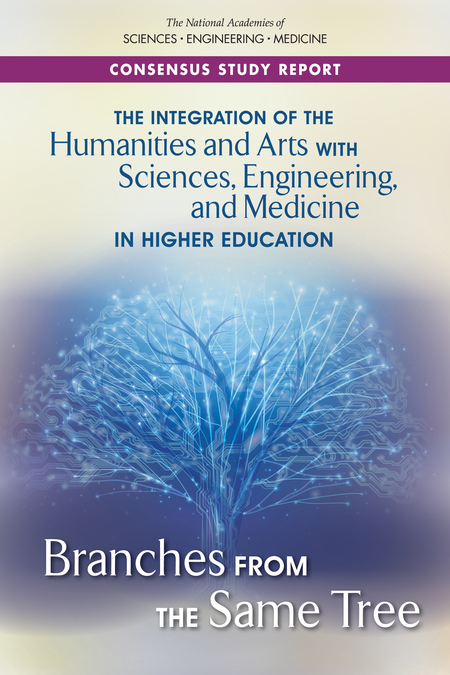Branches from the same tree
For the past two years, Secretary Skorton has chaired a National Academies study committee that was charged with examining whether “educational programs that mutually integrate learning experiences in the humanities and arts with science, technology, engineering, math, and medicine (STEMM) lead to improved educational and career outcomes.”

The National Academies of Sciences, Engineering and Medicine released its report, The Integration of the Humanities and Arts with Sciences, Engineering, and Medicine in Higher Education: Branches from the Same Tree.
An emerging body of evidence suggests that integrating STEMM fields (science, technology, engineering, mathematics, and medicine) with the humanities and arts in higher education is associated with positive learning outcomes that may help students enter the workforce, live enriched lives, and become active and informed citizens.Colleges and universities should consider developing, implementing, and evaluating programs that integrate these fields, said the committee that conducted the study and wrote the report. Smithsonian Secretary Daviud Skorton is chair of the study committee.
The report examines an important trend in higher education: programs that intentionally seek to bridge the knowledge and types of inquiry from multiple disciplines – the humanities, arts, sciences, engineering, technology, mathematics, and medicine – within a single course or program of study. Professors in these programs help students make connections among these disciplines in an effort to enrich and improve learning. The movement toward integration is occurring in part as a response to a higher education system that has become increasingly specialized and isolated by discipline. The National Academies were asked to examine evidence on the outcomes of integrative approaches for undergraduate and graduate students. The report also includes a compendium of more than 200 integrated programs and courses at universities and colleges across the U.S.
There is limited but promising evidence that a variety of positive learning outcomes are associated with some integrative approaches – including improved written and oral communication skills, content mastery, problem solving, teamwork skills, ethical decision-making, empathy, and the ability to apply knowledge in real-world settings, the report says. Surveys show that these skills are valued both by employers and by higher education institutions.
“Public discourse has increasingly reflected a tension about whether higher education should be focused primarily on developing practical workforce skills or more broadly on fostering an enlightened, engaged citizenry,” said Skorton. “But evidence suggests that integrating the STEMM fields with the arts and humanities is linked to learning outcomes that support both of those goals, and that serve students well in many aspects of life.”
Read the full report: Branches From the Same Tree.
Posted: 7 May 2018
-
Categories:
Administrative News , Collaboration , Education, Access & Outreach , News & Announcements , Science and Nature , Spotlight



